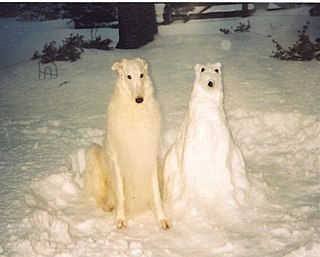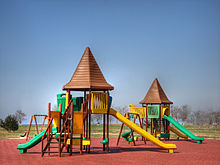
The uncanny valley effect is a hypothesized psychological and aesthetic relation between an object's degree of resemblance to a human being and the emotional response to the object. Examples of the phenomenon exist among robotics, 3D computer animations and lifelike dolls. The increasing prevalence of digital technologies has propagated discussions and citations of the "valley"; such conversation has enhanced the construct's verisimilitude. The uncanny valley hypothesis predicts that an entity appearing almost human will risk eliciting eerie feelings in viewers.
Supernatural fiction or supernaturalist fiction is a genre of speculative fiction that exploits or is centered on supernatural themes, often contradicting naturalist assumptions of the real world.
In anthropology, liminality is the quality of ambiguity or disorientation that occurs in the middle stage of a rite of passage, when participants no longer hold their pre-ritual status but have not yet begun the transition to the status they will hold when the rite is complete. During a rite's liminal stage, participants "stand at the threshold" between their previous way of structuring their identity, time, or community, and a new way.

The uncanny is the psychological experience of an event or thing that is unsettling in a way that feels oddly familiar, rather than simply mysterious. This phenomenon is used to describe incidents where a familiar entity is encountered in a frightening, eerie, or taboo context.

4chan is an anonymous English-language imageboard website. Launched by Christopher "moot" Poole in October 2003, the site hosts boards dedicated to a wide variety of topics, from video games and television to literature, cooking, weapons, music, history, anime, fitness, politics, and sports, among others. Registration is not available and users typically post anonymously. As of 2022, 4chan receives more than 22 million unique monthly visitors, of which approximately half are from the United States.

Herobrine is an urban legend and creepypasta from the video game Minecraft, originating from an anonymous post on the imageboard website 4chan in 2010. He is depicted as a version of the Minecraft character Steve, but with solid white eyes that lack pupils. In numerous iterations, Herobrine has possessed several different unnatural abilities, from constructing unusual structures to possessing animals such as sheep. Other claims about Herobrine include those that describe him to be the deceased brother of Notch, the creator of Minecraft. After the original sightings were published on 4chan, livestreamers Copeland and Patimuss created their own takes on the story, staging sightings and the former creating a webpage oriented around the character.
Ben Drowned is a three-part multimedia alternate reality game (ARG) web serial and web series created by Alexander D. Hall under the pen name Jadusable. Originating as a creepypasta based on the 2000 action-adventure game The Legend of Zelda: Majora's Mask and published by Hall from 2010 to 2020 with a hiatus in-between, the series is known for creating many of the common tropes and themes of creepypasta that are used nowadays and for subverting themes from The Legend of Zelda series. The series concluded on October 31, 2020.

A creepypasta is a horror-related legend which has been shared around the Internet. The term creepypasta has since become a catch-all term for any horror content posted onto the Internet. These entries are often brief, user-generated, paranormal stories that are intended to frighten readers. The subjects of creepypasta vary widely and can include topics such as ghosts, cryptids, murder, suicide, zombies, aliens, rituals to summon entities, haunted television shows, and video games. Creepypastas range in length from a single paragraph to extended multi-part series that can span multiple media types, some lasting for years.

Vaporwave is a microgenre of electronic music and a subgenre of hauntology, a visual art style, and an Internet meme that emerged in the early 2010s, and became well-known in 2015. It is defined partly by its slowed-down, chopped and screwed samples of smooth jazz, 1970s elevator music, R&B, and lounge music from the 1980s and 1990s. The surrounding subculture is sometimes associated with an ambiguous or satirical take on consumer capitalism and pop culture, and tends to be characterized by a nostalgic or surrealist engagement with the popular entertainment, technology and advertising of previous decades. Visually, it incorporates early Internet imagery, late 1990s web design, glitch art, anime, stylized Greek sculptures, 3D-rendered objects, and cyberpunk tropes in its cover artwork and music videos.

The SCP Foundation is a fictional organization that features in stories created by the SCP Wiki, a wiki-based collaborative writing project.

Lavender Town is a fictional village in the 1996 video games Pokémon Red and Blue. Stylized as a haunted location, Lavender Town is home to the Pokémon Tower, a burial ground for deceased Pokémon and a location to find Ghost-Type Pokémon.

Paul Winstanley is a British painter and photographer based in London. Since the late 1980s, he has been known for meticulously rendered, photo-based paintings of uninhabited, commonplace, semi-public interiors and nondescript landscapes viewed through interior or vehicle windows. He marries traditional values of the still life and landscape genres—the painstaking transcription of color, light, atmosphere and detail—with contemporary technology and sensibilities, such as the sparseness of minimalism. His work investigates observation and memory, the process of making and viewing paintings, and the collective post-modern experience of utopian modernist architecture and social space. Critics such as Adrian Searle and Mark Durden have written that Winstanley's art has confronted "a crisis in painting," exploring mimesis and meditation in conjunction with photography and video; they suggest he "deliberately confuses painting's ontology" in order to potentially reconcile it with those mediums.

The NPC, derived from non-player character, is an Internet meme that represents people who do not think for themselves or do not make their own decisions; those who lack introspection or intrapersonal communication. The meme gained further viral status on TikTok, with the surge of "NPC Streamers". In terms of politics, it's often been used by those with anti-establishment views to describe those who fail to question authority, "groupthink", or a stance that would display conformity and obedience. The NPC meme, which graphically is based on the Wojak meme, was created in July 2016 by an anonymous author and first published on the imageboard 4chan, where the idea and inspiration behind the meme were introduced.

A cursed image refers to a picture that is perceived as mysterious or disturbing due to its content, poor quality, or a combination of the two. A cursed image is intended to make a person question the reason for the image's existence in the first place. The term was coined on social media in 2015 and popularised the following year.

Islands: Non-Places is a 2016 abstract art game developed and published independently by artist and animator Carl Burton, best known for the animated GIF illustrations he created for season two of the Serial podcast. The game was released on November 17, 2016, on iOS, Windows, Mac, and Linux, and consists of a series of anonymous, liminal environments – the eponymous "non-places". These scenes appear mundane at first, but become increasingly surreal as the player interacts with the scenery.

The Backrooms are a fictional concept first mentioned on a 2019 4chan thread. One of the best known examples of the liminal space aesthetic, the Backrooms are commonly depicted as an extradimensional space containing impossibly large expanses of empty rooms accessed by "no-clipping out of reality" in certain areas.
Analog horror is a subgenre of horror fiction and an offshoot of the found footage film genre, said to have originated online during the late 2000s and early 2010s with web series such as No Through Road, Local 58, Gemini Home Entertainment, and Marble Hornets.
An Internet aesthetic, also simply referred to as an aesthetic or microaesthetic, is a visual art style, sometimes accompanied by a fashion style, subculture, or music genre, that usually originates from the Internet or is popularized on it. Throughout the 2010s and 2020s, online aesthetics gained increasing popularity, specifically on social media platforms such as Tumblr, Pinterest, Instagram, and TikTok, and often were used by people to express their individuality and creativity. They can also be used to create a sense of community and belonging among people who share the same interests. The term aesthetic has been described as being "totally divorced from its academic origins", and is commonly used as an adjective.
Ayano Sudo is a Japanese contemporary artist and photographer. She won the 2014 Canon New Cosmos Photography Competition and photographs professionally for Japanese magazines such as Spoon and FREECELL. Her works have been shown domestically in Japan and internationally and are included in the collections of museums such as the Tokyo Photographic Art Museum and the George Eastman Museum.















